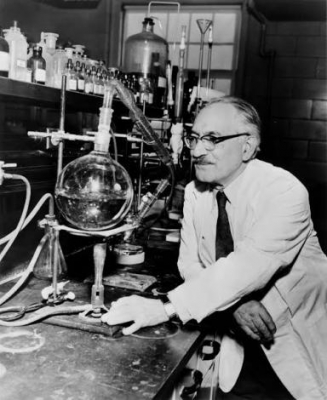
Streptomycin is an antibiotic used to treat bacterial infections. It was the first antibiotic effective against tuberculosis and was discovered in 1943.
After the discovery of penicillin, researchers were inspired to search for more antibiotics. At this time, Selman Abraham Waksman, a Jewish-American microbiologist, was researching the decomposition of organisms that lived in the soil. He was working closely with a bacteria called ‘streptomyces griseus’ but was unable to produce consistent cultures.
A breakthrough occurred when a farmer took one of his hens, suffering from a mysterious disease, to the research station at Rutgers University where Waksman worked. A vet took a sample from the hen’s throat, analyzed it and found that it was a strain of streptomyces griseus. It was duly sent to Waksman’s lab for testing. Here, a PhD student named Albert Schatz, isolated a substance from this bacterium, which was found to be consistently effective against tuberculosis. Schatz named the substance ‘streptomycin’.
Streptomycin was also found to be effective against meningitis, typhoid and even the plague! Waksman, who developed a number of antibiotics, was responsible for introducing procedures that led to the development of many more. He was awarded the Nobel Prize for his work in 1952.
Picture Credit : Google




